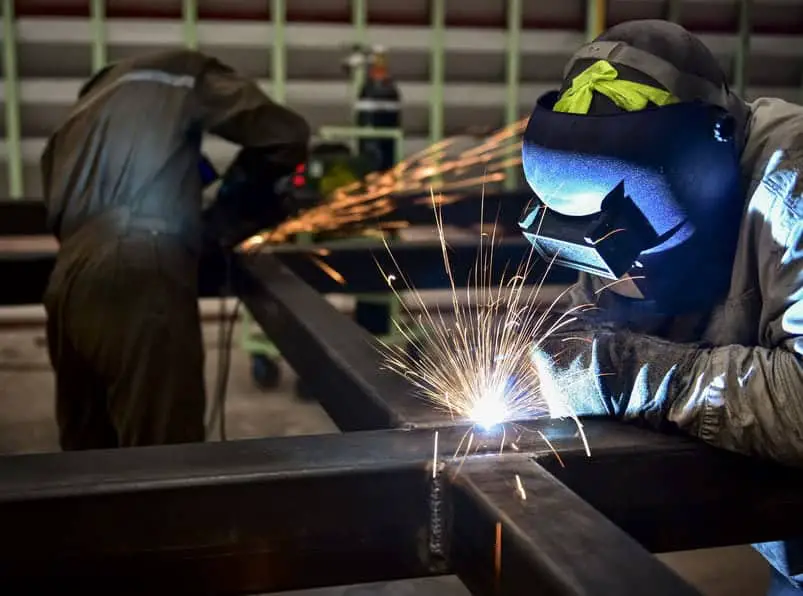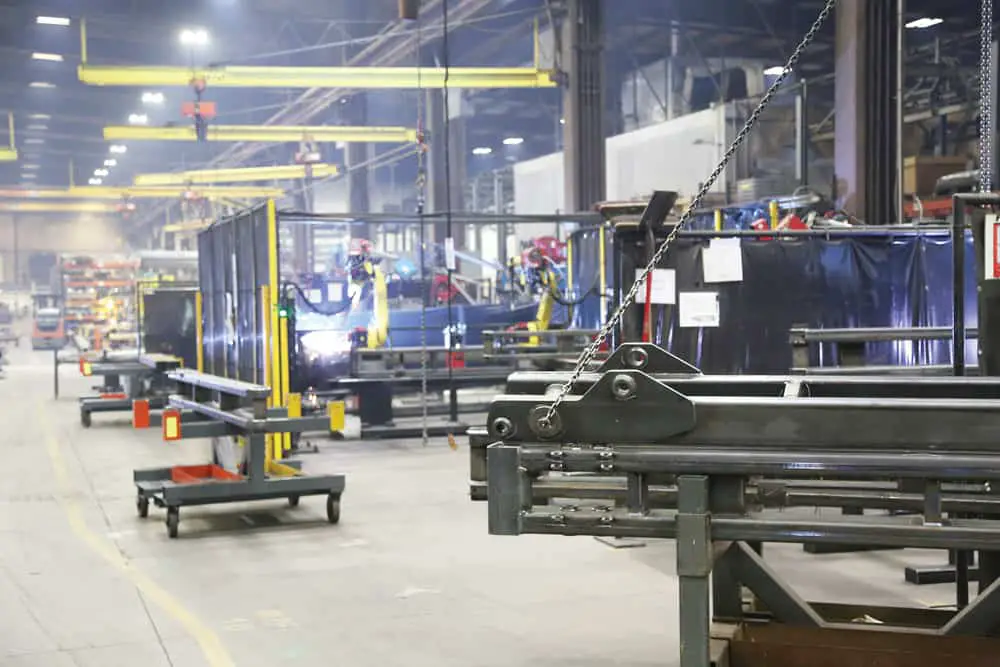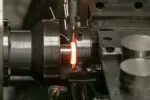
Both welding and fabrication involves working with metal parts.
Therefore,
Many confuse fabrication with welding!!
But, in reality…
Fabrication is a linear process which involves various steps and professionals in getting the final finished workable machinery. On the other hand, welding is just a single step that is included in the fabrication process. While fabrication leads to the production of entire machinery, welding only joins two pieces of metals together.
But it is not necessary that welding has to be a part of fabrication always. I mean, welding can be a task in itself where there is the need to mend metals and not to make a machine!
Still confused?
Well, then let’s delve deep into both the processes to have a crystal clear idea of both fabrication and welding…
What is fabrication and welding?
To simply put it, fabrication is a vast process whereas welding is just a part of it.
Welding is the process of joining two metal pieces together with the aid of flames and brazing rods.
Fabrication is the process by which metal structures and machines are built. To get to the final result of fabrication, you need to pass through the following processes: cutting of the metals, burning, welding, machining, forming and then assembling.
Metal fabrication includes projects like making of hand rails to machinery. If you need more clearance of the projects that is done through fabrication, they are the making of hand tools, nuts and screws, cutlery machines, spring and wire, hardware parts, etc.

So, fabrication is a wider field which includes making of metal products from designing to manufacturing.
While welders only have to join metal pieces together, a fabricator needs to perform several tasks from cutting, bending, shaping, assembling, engineering and finishing off.
Now, let’s discuss both the processes in details:
Metal fabrication
Fabrication of metals involves a linear and logical progression with the following series of processes:
The bidding:
Bidding is the process wherein the company needing the fabricated metal product will place an advertisement of their product details and the amount they wish to pay and the company to undertake the project will place the bid with their resources available, the price in which they want to offer the completed project, and the final details of the finished product.
The client company will then select the best bidder from the deals and the quality of work that the bidder has promised to deliver.
The planning:
As fabrication involves number of steps and processes, therefore prior planning before starting of the project is utmost necessary. A proper planning of all the steps to be included, materials required, the design and the budget is essential.
Here, the designer and the engineers sit together to have a better understanding of the concept, is specifications and the final outcome of the finished product.
The production:
This is where all the actual work begins. Production involves the joint work of the following professionals:
The Engineers:
Three categories of engineers are required; chemical, structural and mechanical engineers. Their work is setting the standards for the project, ensuring of the compliance, and the prediction of performances.
The Designers:
The work of the designer is to take the planning from the engineers and turn those concepts into workable instructions for the other professionals involved in the fabrication. They sign the steps in flow chart that are followed by the fabricators.
The iron workers:
The work of iron workers in the fabrication process is to source and prepare iron in the initial stages. Their work also involves cutting, bending and shaping of the iron.
The blacksmiths:
Their work is to heat and forge raw iron into finished products.
The welders:
The welder now joins or assembles all the metal parts together through the various processes involved in welding which we are going to discuss later in this article.
The machine setters:
Their work is to turn all the metal stocks into workable structures. They set the machines for accepting stocks and also look into the functioning of the machine throughout the manufacturing process.
The managers and supervisors:
Their work is to look into the quality of the products and ensure the smooth flow of work between the various workers. They also look into client’s satisfaction.
Welding
In simple words, welding is just joining of two metal parts with the help of heat and pressure. But, welding too involves a number of different processes or you can say that there are 4 different types of welding which uses different tools and mechanisms let’s learn about them:
TIG:
Also called tungsten inert gas welding, it uses tungsten electrodes in order to create the weld.
MIG:
Also called gas metal arc welding, this is a wire feed welding method. It uses consumable rod fed from a continuous spool of wire electrodes in order to create the weld.
SMAW:
Also called shielded metal arc welding, it uses electric current and filler rod to join the metal pieces together. It is popularly known as stick welding
OA:
Also called oxy-acetylene welding, it uses combined oxygen and acetylene flame that oozes out a nozzle flame and is passed through a filler rod to weld the metal parts.
What is the difference between a fabricator and a welder?
A welder is assigned with a single task that is welding or joining two metal pieces together
Whereas, a fabricator would require performing a series of tasks from cutting to bending, shaping, burning, welding, designing, assembling, finishing and manufacturing.
So, a welder needs to be trained in a specific job that is to learn the various techniques of welding only. On the other hand, a fabricator would require learning the tasks of ironworkers, blacksmiths, welders, engineers and machine setters.
Is a fabricator a welder?
As welding is a part of fabrication, so a fabricator is obviously a welder, but not every welder is trained to be a fabricator because fabrication involves lot more than just welding.
What does a welder fabricator do?
The work of a welder fabricator is to weld the metal pieces, that is, to join the metal pieces once the metals are cut, bent and shaped. The welder fabricator joins all the metal pieces together to give the final shape of the machine or the metal product.
Let’s call it a day!
Hey fam!
I hope you enjoyed reading the article. Do stay tuned for our upcoming articles as we have in store solutions for your every welding related query!
Be it a fabricator or a welder, every job is precious and tough and calls for respect!
And that is why we enjoy writing about them so that you know the amount of hard work they need to put in their work field.
With that I am signing off from this article with a hope to see you in my next column!
Have a great day fam!







